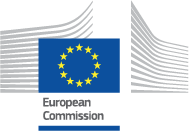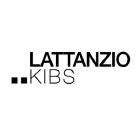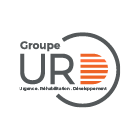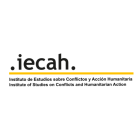WORKING WITH DG ECHO AS AN NGO PARTNER | 2021 - 2027
MGA
The MGA is a corporate template adopted at Commission level, which has to be used by all its Services and Executive Agencies who award EU grants. With the MGA, all beneficiaries of EU grants are bound by the same contractual rules.
No. As of January 2021, for every action, a Model Grant Agreement is signed.
The MGA is composed by: a Data Sheet providing information linked to the specific Action such as title of the action, duration, starting date, EU contribution amount, funding rate, payments, reporting, etc. It is then followed by 44 articles (formerly the general conditions) divided in 6 chapters and 5 Annexes. The Annexes are the following: Annex 1 – Description of the Action (e-SF); Annex 2 – Estimated budget for the Action; Annex 3 – Accession Form (if applicable); Annex 4 – Model for the financial statements and Annex 5 – DG ECHO Specific Rules.
Yes, some terms are new. Partners are now called beneficiaries. Implementing partners are recipients of financial support to third parties. The Commission is called the Granting
Authority. Beneficiaries are called final beneficiaries or persons in need. The Single Form is called Annex 1 – description of the action. The Interim report fits now into continuous
reporting. The Final report is called Periodic final report. Procurement is called subcontracting/purchases.
A specific Page on the ‘Terminology in the HUMA MGA’ is available on DG ECHO Partners website, at this link.
It is indeed a mistake already solved. The people authorised are those who have access rights to the system APPEL.
Annex 2 is the estimated budget to be presented at proposal stage. Annex 4 corresponds to the final costs statement to be submitted at the final report stage together with the general ledger. Both Annexes follow the same structure in terms of cost categories.
Yes. The Commission will publish an AGA (Annotated Grant Agreement) common to all Directorate Generals and EU Programmes providing guidance on the MGA excluding its Annex 5 as the latter includes specificities regarding the specific Directorate General and/or EU Programme. Guidance on Annex 5 – on DG ECHO’s specific rules will also be developed. A provisional version of both documents is currently available on DG ECHO Partners’ website.
Annex 5 to the MGA contains DG ECHO specific rules: on communication and visibility activities and for carrying out an Humanitarian Action. Specific provisions are foreseen for example on multi-purpose cash transfers, transfer of assets or the possibility to request alternative arrangements from some provisions of the grant agreement.
No, it is not necessary anymore. Instructions on how to sign the MGA are provided in the cover letter accompanying the grant agreement.
A hard copy of the grant agreement always needs to be sent to DG ECHO when it has been hand-signed. Instead, in case the Partner has the possibility to use QES, it must be sent only via email to the following email address: ECHO-CENTRAL-MAILBOX@ec.europa.eu. Instructions on how to sign the agreements are given in the cover letter accompanying the grant agreement.
Co-beneficiaries which are not the coordinator, must accede to the grant by signing the accession form (Annex 3 to the MGA) within 30 days from the entry into force of the Agreement. Only the coordinator signs the grant agreement. Instructions on how to sign and send the Accession Form(s) are given in the cover letter accompanying the grant agreement. In case of multiple co-beneficiaries, please consider that the Accession Forms need to be sent all at once and in the same format (either signed with qualified electronic signature by email or hand-signed by courier).
In case of addition of new beneficiary(ies) during the implementation of the Action, see FAQ 78.
If the Partner cannot sign the grant agreement using QES (more background information available at this link), it has to send back to DG ECHO one handwritten signed original by courier. Basic electronic signature is not accepted.
The Commission will sign using qualified electronic signature (QES). To the partners is given the possibility to choose between QES or handwritten signature. Instructions on how to sign are given in the cover letter accompanying the agreement.
Certified NGOs can be referred to as DG ECHO certified partners.
Yes, there is no change in this respect.
It is a grant agreement to which several DG ECHO certified partners and/or international organisations are members. All together they form a consortium.
Only the coordinator (leader) of the consortium signs the grant agreement. The rest of beneficiaries have 30 days as of the entry into force of the agreement to date and sign a pre-filled form called Accession Form, received by the coordinator together with the grant agreement. Once the forms are gathered by the coordinator, they are sent to the Commission. Detailed instructions will be given in the cover letter sent with the grant agreement.
Annex 3 needs to be signed by DG ECHO Certified Partners participating in the implementation of the action, who are not the coordinator of the consortium. The accession form needs to be signed within 30 days after the entry into force of the agreement. (See art. 40 MGA) To be noted that, new beneficiaries can be added also during the implementation of the action through a Modification Request and using the appropriate form published on DG-ECHO Partners’ website.
Yes, DG ECHO’s decision on staff costs is retroactive to 1st of January 2021. In order to reflect this in the ongoing actions, no modification request is needed. The information on staff costs can be provided at final report stage by filling in the correct column of Annex 4 to the MGA.
The legal entity data of beneficiaries (legal name, address, legal representatives…) are filled-in in the Preamble of the MGA with the data stored in DG ECHO’s database (APPEL) since DG ECHO has not onboarded eGrants yet.




